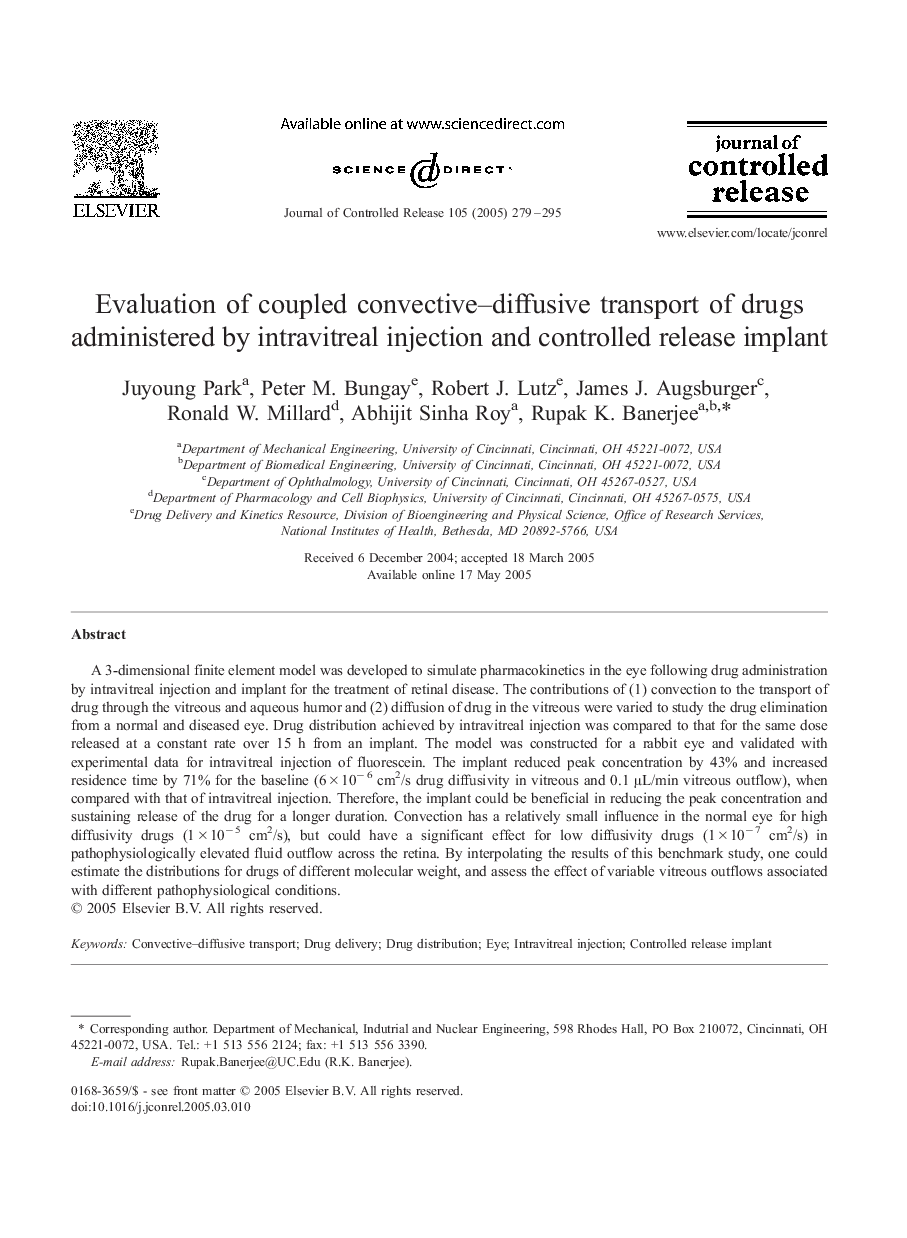| Article ID | Journal | Published Year | Pages | File Type |
|---|---|---|---|---|
| 10613556 | Journal of Controlled Release | 2005 | 17 Pages |
Abstract
A 3-dimensional finite element model was developed to simulate pharmacokinetics in the eye following drug administration by intravitreal injection and implant for the treatment of retinal disease. The contributions of (1) convection to the transport of drug through the vitreous and aqueous humor and (2) diffusion of drug in the vitreous were varied to study the drug elimination from a normal and diseased eye. Drug distribution achieved by intravitreal injection was compared to that for the same dose released at a constant rate over 15 h from an implant. The model was constructed for a rabbit eye and validated with experimental data for intravitreal injection of fluorescein. The implant reduced peak concentration by 43% and increased residence time by 71% for the baseline (6 Ã 10â 6 cm2/s drug diffusivity in vitreous and 0.1 μL/min vitreous outflow), when compared with that of intravitreal injection. Therefore, the implant could be beneficial in reducing the peak concentration and sustaining release of the drug for a longer duration. Convection has a relatively small influence in the normal eye for high diffusivity drugs (1 Ã 10â 5 cm2/s), but could have a significant effect for low diffusivity drugs (1 Ã 10â 7 cm2/s) in pathophysiologically elevated fluid outflow across the retina. By interpolating the results of this benchmark study, one could estimate the distributions for drugs of different molecular weight, and assess the effect of variable vitreous outflows associated with different pathophysiological conditions.
Related Topics
Physical Sciences and Engineering
Materials Science
Biomaterials
Authors
Juyoung Park, Peter M. Bungay, Robert J. Lutz, James J. Augsburger, Ronald W. Millard, Abhijit Sinha Roy, Rupak K. Banerjee,
